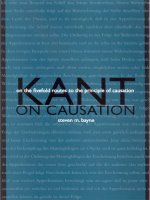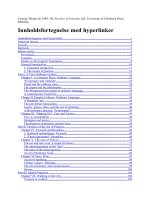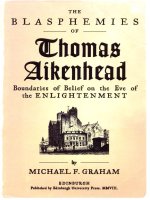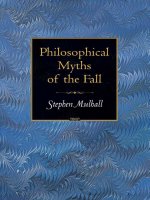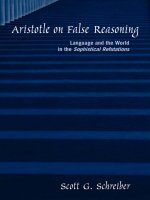university of texas press signs of the inka khipu binary coding in the andean knotted-string records aug 2003
Bạn đang xem bản rút gọn của tài liệu. Xem và tải ngay bản đầy đủ của tài liệu tại đây (7.38 MB, 217 trang )
SIGNS OF THE INKA KHIPU
Tseng 2003.3.5 06:52
6778 Urton / SIGNS OF THE INKA KHIPU / sheet
1 of 216
The Linda Schele Series in Maya and Pre-Columbian Studies
This series was made possible through the generosity of
William C. Nowlin, Jr., and Bettye H. Nowlin
The National Endowment for the Humanities
and the following donors:
Elliot M. Abrams and AnnCorinne
Freter
Anthony Alofsin
Joseph W. Ball and Jennifer T.
Taschek
William A. Bartlett
Elizabeth P. Benson
Boeing Gift Matching Program
William W. Bottorff
Victoria Bricker
Robert S. Carlsen
Frank N. Carroll
Roger J. Cooper
Susan Glenn
John F. Harris
Peter D. Harrison
Joan A. Holladay
Marianne J. Huber
Jānis Indrikis
The Institute for Mesoamerican
Studies
Anna Lee Kahn
Rex and Daniela Koontz
Christopher and Sally Lutz
Judith M. Maxwell
Joseph Orr
The Patterson Foundation
John M. D. Pohl
Mary Anna Prentice
Philip Ray
Louise L. Saxon
David M. and Linda R. Schele
Richard Shiff
Ralph E. Smith
Barbara L. Stark
Penny J. Steinbach
Carolyn Tate
Barbara and Dennis Tedlock
Nancy Troike
Donald W. Tuff
Javier Urcid
Barbara Voorhies
E. Michael Whittington
Sally F. Wiseley, M.D.
Judson Wood, Jr.
Tseng 2003.3.5 06:52
6778 Urton / SIGNS OF THE INKA KHIPU / sheet
2 of 216
SIGNS OF THE INKA KHIPU
BINARY CODING
IN THE ANDEAN KNOTTED-STRING RECORDS
Gary Urton
UNIVERSITY OF TEXAS PRESS, AUSTIN
Tseng 2003.3.5 06:52
6778 Urton / SIGNS OF THE INKA KHIPU / sheet
3 of 216
Copyright © 2003 by the University of Texas Press
All rights reserved
Printed in the United States of America
First edition, 2003
Requests for permission to reproduce material from
this work should be sent to Permissions, University
of Texas Press, Box 7819, Austin, TX 78713-7819.
The paper used in this book meets the minimum
requirements of ANSI/NISO Z39.48-1992 (R1997)
(Permanence of Paper).
Library of Congress Cataloging-in-Publication Data
Urton, Gary, date
Signs of the Inka Khipu : binary coding in the
Andean knotted-string records / Gary Urton.
p. cm. — (The Linda Schele series in Maya
and pre-Columbian studies)
Includes bibliographical references and index.
ISBN 0-292-78539-9 (alk. paper)
ISBN 0-292-78540-2 (pbk.: alk. paper)
1. Quipu. 2. Incas—Communication. 3. Binary
system (Mathematics) I. Title. II. Series.
F3429.3.Q6 U78 2003
302.2'22—dc21
2002012297
Tseng 2003.3.5 06:52
6778 Urton / SIGNS OF THE INKA KHIPU / sheet
4 of 216
For Anthony Aveni and Jane Pinchin,
dear friends and colleagues
and unwavering sources of support
for many years at Colgate University
Tseng 2003.3.5 06:52
6778 Urton / SIGNS OF THE INKA KHIPU / sheet
5 of 216
THIS PAGE INTENTIONALLY LEFT BLANK
Contents
Preface and Acknowledgments ix
Chapter 1
Memory,Writing, and Record Keeping in the Inka Empire 1
Chapter 2
Theory and Methods in the Study of Khipu Binary
Coding 37
Chapter 3
The Physical Components of Khipu Binary Coding 60
Chapter 4
The Linguistic Components of Khipu Binary Coding 89
Chapter 5
Khipu Sign Capacity and Code Conversion 114
Chapter 6
Sign Theory, Markedness, and Parallelism in the Khipu
Information System 135
Chapter 7
Conclusions 161
Appendix
Tabular Description of Khipu UR19 from Chachapoyas 165
Notes 169
Bibliography 175
Index 195
Tseng 2003.3.5 06:52
6778 Urton / SIGNS OF THE INKA KHIPU / sheet
7 of 216
He who seeks to count the stars before he can count the
scores and knots of the quipus deserves derision.
,
Royal Commentaries of the Incas
(1966 [1609–1617]: 397)
The author, who over twenty years ago published a book on Quechua
and Inka astronomy entitled At the Crossroads of the Earth and the Sky:
An Andean Cosmology, fervently hopes that his reader of today will be
more sympathetic to the present undertaking than would have been the
Inca Garcilaso de la Vega, who penned the above admonishment almost
four centuries ago!
Tseng 2003.3.5 06:52
6778 Urton / SIGNS OF THE INKA KHIPU / sheet
8 of 216
Preface and Acknowledgments
In one form or another, I have been at work on this book for almost
ten years. The basic argument that I present here began to take shape in
a paper entitled ‘‘What Do the Khipu Tell Us about the Inka Empire?’’
which I delivered in a symposium that was held at Dumbarton Oaks,
Washington, D.C., in 1997. The symposium ‘‘Expressions of Power in
the Inka Empire,’’ in which the original paper was presented, was orga-
nized by Richard Burger, Ramiro Matos M., and Craig Morris. I thank
the organizers of that symposium for the opportunity to present a paper
in what was the first and only symposium on the Inka ever to be held
in the important venue of Dumbarton Oaks.
The paper from the Dumbarton Oaks symposium sat for a couple of
years before being taken out, dusted off, and presented in a significantly
revised form at a conference entitled ‘‘First Writing,’’ which was orga-
nized by Stephen D. Houston and held at the Sundance resort in Provo,
Utah, on April 6–8, 2000. I thank Steve for the invitation to participate
in that wonderful conference, and I also thank him and the other par-
ticipants for their questions and comments on my paper. I note that a
condensed version of the arguments and some of the material presented
in Chapters 1–5 of this book are scheduled to be published as a chapter
in a volume entitled The First Writing (Cambridge University Press, in
press), currently being edited by Houston from the papers presented at
the Sundance conference.
In a parallel telling of the history of how this book came into being,
I should also note that this work is perhaps the most prominent result
of a decade-long interchange with my colleague Bill Conklin. My first
opportunity to look closely at a collection of khipu came in 1992 when
Conklin and I spent a day studying and discussing khipu in the collec-
ix
Tseng 2003.3.5 06:52
6778 Urton / SIGNS OF THE INKA KHIPU / sheet
9 of 216
x SIGNS OF THE INKA KHIPU
tions of the American Museum of Natural History in New York City.
My first attempt at an analysis of the issues addressed in this book—
specifically its concern with the possible meaning of several features of
binary coding (i.e., spinning, plying, and knot directionality) in the
khipu—appeared in an article published in 1994, which was based on
my independent study of the large collection of khipu in the Museum
für Völkerkunde in Berlin. The material presented in that article sub-
sequently came under intense scrutiny and further analysis by Conklin
in an article that he originally wrote and presented at a round table on
the khipu, which was co-organized by Jeffrey Quilter and myself and
took place at Dumbarton Oaks in 1997 (see Conklin 2002). I am now
returning in this study to the topic of binary coding, but I do so with
the advantage of Conklin’s sharp insights and clear thinking in his re-
cent article, as well as on the basis of additional observations that I have
recorded in the intervening period.
For their reading of earlier versions of parts of the material presented
in this book, I thank Anthony Aveni, Carrie Brezine, Bill Conklin, Rob-
ert Harberts, and Camilla Townsend. Special thanks go to my longtime
friend Robert Harberts, of the Goddard Space Center, for discussing
with me the information storage capacityof the khipu binary coding sys-
tem. The two readers for the University of Texas Press, Frank Salomon
and Stephen Houston, provided exceptionally clear, critical, and com-
prehensive commentary on the manuscript; I thank them both for the
time and energy they put into helping to improve this book. I thank
Laura Sanchis of Colgate University’s Computer Science Department
for her helpful suggestions on readings in binary coding, and I thank my
former student Nicole Casi, both for reading an early, partial manuscript
of the book as well as for reminding me of the stones.Thanks to my wife,
Julia Meyerson, who read and commented on the entire manuscript and
who produced the drawings. And finally, I express my gratitude to my
editor at the University of Texas Press, Nancy Warrington, whose care
and attention in editing the manuscript were greatly appreciated. I alone
am responsible for any errors that remain in this book.
For access to and help with my study of khipu in the Museum für
Völkerkunde in Berlin in 1993, I thank Drs. Manuela Fischer and Marie
Gaida. For similar assistance and collegial support in the American Mu-
seum of Natural History in New York on three different occasions
(1992, 1996, and 2000), I thank Craig Morris,Vuka Roussakis, Barbara
Tseng 2003.3.5 06:52
6778 Urton / SIGNS OF THE INKA KHIPU / sheet
10 of 216
PREFACE AND ACKNOWLEDGMENTS xi
Conklin, and Anahid Akasheh. For their support and cooperation dur-
ing my study of khipu in the Peabody Museum for Archaeology and
Ethnology at Harvard University, I thank Gloria P. Greis and Bill Fash.
Anne Rowe made possible my study of two khipu samples in the Textile
Museum in Washington, D.C.
My study of the khipu in the Centro Mallqui, Leymebamba (Cha-
chapoyas), Peru, was made possible by the generosity of Sonia Guillén
and Adriana von Hagen and by the goodwill and indefatigable good
spirits of my ‘‘warmi khipukamayuqkuna’’: Marcelita Hidalgo, Empera-
triz Alvarado, Acelita Portal, and Rosalía Choque. I also acknowledge
with gratitude the able assistance in Leymebamba of Alejo Rojas, an
archaeology student from San Marcos University in Lima, in 1999.
My ethnographic fieldwork in Candelaria and Tarabuco, Bolivia, in
1993–1994, which I draw on here for material concerning the symbol-
ism of colors in dyeing threads and weaving textiles, was facilitated by
my dear friends Verónica Cereceda and the late Gabriel Martínez, who
generously allowed me to use the facilities and contacts of their NGO,
Antropólogos Sur Andino (ASUR), which focused on the promotion
of weaving among women of the region of Sucre, Bolivia.
For their financial support of my research over the years since 1993,
I thank the following organizations, foundations, and individuals: the
German Academic Exchange Service (DAAD), for research support in
Berlin, Germany, in the summer of 1993; the National Endowment
for the Humanities, for a Summer Stipend for work in Berlin and at
the Archivo General de Indias in Seville in the summer of 1993, as
well as for postdoctoral fellowships to conduct and write up khipu re-
search in 1994–1995 and 2000; the National Science Foundation, for a
postdoctoral grant (#SBR 9221737) for research on Quechua ethno-
mathematics in Sucre, Bolivia, in 1993–1994; the Wenner-Gren Foun-
dation for Anthropological Research, for support of my research on the
khipu from Laguna de los Cóndores, Chachapoyas, in the summer of
1999; the Dean of the Faculty, Colgate University, for support for my
research in Chachapoyas in the summer of 1998 and at the Peabody Mu-
seum in 2000; the American Philosophical Society, for a grant to con-
duct research in the Archivo General de Indias in Seville, Spain, in 2000;
and finally, to the John D. and Catherine T. MacArthur Foundation, for
support for research and time off to write up my studies on the khipu
(including this book) in 2001–2006.
Tseng 2003.3.5 06:52
6778 Urton / SIGNS OF THE INKA KHIPU / sheet
11 of 216
THIS PAGE INTENTIONALLY LEFT BLANK
SIGNS OF THE INKA KHIPU
Tseng 2003.3.5 06:52
6778 Urton / SIGNS OF THE INKA KHIPU / sheet
13 of 216
THIS PAGE INTENTIONALLY LEFT BLANK
CHAPTER 1
Memory, Writing, and Record
Keeping in the Inka Empire
It is one of the great ironies of the age in which we live that the ca-
cophony of computer-based, electronically produced information that
suffuses our every waking moment is carried into our consciousness on
patterned waves of just two signs: 1 and 0. This, of course, is no news.
We have all been made aware since the dawn of the present Informa-
tion Age that the ongoing revolution in computing technology rests
on a system of binary coding. I discuss the matter at length below, but
I would clarify here that by ‘‘binary coding,’’ I mean a system of com-
munication based on units of information that take the form of strings
of signs or signals, each individual unit of which represents one or the
other of a pair of alternative (usually opposite) identities or states; for ex-
ample, the signal may be on or off (as in a light switch), positive or nega-
tive (as in an electrical current), or 1 or 0 (as in computer coding). One
can argue that it is the simplicity of binary coding that gives computing
technology and its information systems their great flexibility and seem-
ingly inexhaustible expansiveness. In this study, I explore an earlier and
potentially equally powerful system of coding information that was at
home in pre-Columbian South America and which, like the coding sys-
tems used in present-day computer language, was structured primarily
as a binary code.
After the above grandiose introduction, it may come as a letdown to
thereadertolearnthatwedonotyetknow,infact,howtointerpretor
read the majority of the information that is presumably encoded in the
recording system that I describe and analyze in this book. The system
in question is that of the Inka khipu.
1
Khipu (knot; to knot) is a term
drawn from Quechua, the lingua franca and language of administra-
tion of the Inka Empire (ca. 1450–1532 ..). The khipu were knotted-
1
Tseng 2003.3.5 06:52
6778 Urton / SIGNS OF THE INKA KHIPU / sheet
15 of 216
1.1. A khipu in the American Museum of Natural History (AMNH B/8704).
string devices (see Figure 1.1) that were used for recording both statis-
tical and narrative information, most notably by the Inka but also by
other peoples of the central Andes from pre-Inkaic times (see Conklin
1982; Shady, Narváez, and López 2000), through the colonial and re-
publican eras (Brokaw 1999; Murra 1975; Platt 2002; Urton 1998,
2001), and even—in a considerably transformed and attenuated form—
down to the present day (Mackey 1970, 2002; Núñez del Prado 1990;
Ruiz Estrada 1998; Salomon 2002).
I estimate from my own studies and from the published works of
other scholars that there are about 600 extant khipu in public and pri-
vate collections around the world (see Chapter 2). Although prove-
nience data are notoriously sketchy for museum samples of khipu, what
information we do have tends to support the conclusion that most
samples were looted from grave sites along the central and south coast of
Peru during the late nineteenth and early twentieth centuries. A recent
discovery of thirty-two khipu in burial chambers in the northern Peru-
vian Andes is consistent with the presumed funerary disposal of these
devices (see Urton 2001 for a discussion of the possible significance of
this context for khipu disposal).
2
Tseng 2003.3.5 06:52
6778 Urton / SIGNS OF THE INKA KHIPU / sheet
16 of 216
MEMORY, WRITING, AND RECORD KEEPING 3
Europeans became aware of the knotted-string devices used by the
indigenous Inka record keepers from the earliest days following the
Spanish Conquest, which began in 1532. Hernando Pizarro, the brother
of the leaderof the conquistadors and (later) marquis, Francisco Pizarro,
described an encounter that he and his men had with khipu keepers on
the royal road from the highlands down to the central coast of Peru in
1533. Pizarro notes that when he and his men removed some goods
from one of the Inka storehouses, the record keepers ‘‘untied some of
the knots which they had in the deposits section [of the khipu], and
they [re-]tied them in another section [of the khipu]’’ (H. Pizarro 1920
[1533]: 175 and 178).
Following this initial reference to khipu, accounts of these devices
appear with considerable frequency in the Spanish chronicles and docu-
ments recorded throughout the first few decades of the establishment of
the colony (see Urton n.d.a). Khipu were one of the principal sources of
information used by the Spaniards as they began to compile records per-
taining to the former inhabitants of the empire. The former Inka record
keepers—known as khipukamayuq (knot maker/keeper)—supplied colo-
nial administrators with a tremendous variety and quantity of informa-
tion pertaining to censuses, tribute, ritual and calendrical organization,
genealogies, and other such matters from Inka times. While numerous
colonial writers in Peru left accounts of the khipu that inform us on cer-
tain features and operations of these devices, none of these accounts is
extensive or detailed enough to put us on solid ground in our attempts
today to understand exactly how the Inka made and consulted (that is,
read) these knotted and dyed records.
An issue of utmost interest and concern to several scholars who are
intensively studying these devices today (see esp. Quilter and Urton
2002) centers around the question of whether the khipu recording sys-
tem should be characterized as a system of ‘‘mnemonics,’’ or if it may in
fact have constituted a system of ‘‘writing.’’ In a word, the matter under
dispute is whether khipu were (respectively) string-and-knot-based con-
figurations whose purpose was to provide ‘‘cues’’ to aid the Inka ad-
ministrator who made any particular sample to recall a specific body of
memorized information, or if these devices were constructed with con-
ventionalized units of information that could be read by khipu makers
throughout the empire. I should state that I am primarily an adherent of
Tseng 2003.3.5 06:52
6778 Urton / SIGNS OF THE INKA KHIPU / sheet
17 of 216
4 SIGNS OF THE INKA KHIPU
1.2. Khipu construction elements.
the latter of these two starkly differentiated and ultimately caricatured
views of khipu records (see Urton 1998, 2002). In fact, I suspect that
the final solution we will arrive at regarding the types of information
retained on these devices will look more like a combination of the two
forms of record keeping alluded to above.
In this introductory chapter, I first provide an overview of these two
differing points of view on the question of what kind of recording sys-
tem the khipu may have represented as they have emerged in publica-
tions since the beginning of the twentieth century. I then lay out in a
general way the new approach to analyzing and interpreting the khipu
developed in this book. Before beginning, it may be helpful to the non-
Andeanist reader for me to describe the basic features of these remark-
able devices, the khipu.
Khipu Structures
In general terms, khipu are composed of a main, or primary, cord to
which are attached a variable number of what are termed pendant strings
(see Figure 1.2). Many samples have only a few pendant strings, while
a couple have upward of 1,500 pendants. To state definitively the aver-
age number of pendant strings on all khipu would be a difficult under-
Tseng 2003.3.5 06:52
6778 Urton / SIGNS OF THE INKA KHIPU / sheet
18 of 216
MEMORY, WRITING, AND RECORD KEEPING 5
taking, particularly as our studies of some collections are incomplete.
As an example, however, I note that for a collection of thirty-two khipu
recently discovered in Chachapoyas, in northern Peru (see Urton 2001
and below), the average number of pendant strings on the twenty-two
samples that were well enough preserved to allow for close study was
149 (the range is between 6 and 762).
Primary cords usually have a diameter in the range of
1
/2 to
2
/3 cm,
and they often display complex bi- or multicolored spin and ply pat-
terns. It is not uncommon for primary cords to be finished off with
a ‘‘wrapping’’ composed of a cord made of two or three pairs of dif-
ferently colored spun and plied yarns (see Figure 1.3). In some cases,
tassels may be tied onto primary cords indicating divisions or classifi-
cations (of some manner) of the information registered on groups of
pendant strings. I have examined some twenty khipu samples in vari-
ous collections that have large needlework ‘‘bundles’’ that terminate one
end of the primary cord (see Figure 1.4). Salomon has described similar
bundles on a few samples of khipu used today for ritual purposes in the
Peruvian central highland community of Tupicocha (Salomon 2002; see
below). Such ‘‘end ornaments’’ in Tupicocha are generally referred to as
pachacamanta (‘‘about/concerning the hundred’’; Salomon 2002: 303).
Given that the unit of one hundred tribute payers was an important
organizational unit in Inka administration—often used as a synonym for
the sociopolitical and communal labor groupings referred to as ayllu—
these khipu ornaments as retained in the samples from Tupicocha today
may offer a clue to the significance of such ornaments on archaeological
khipu. That is, they may have indicated the administrative class of khipu
in question, as well as its general subject matter and the magnitude of
units recorded.
Pendant strings may have attached to them secondary, or subsidiary,
strings, which may, in turn, carry subsidiary (i.e., tertiary) strings, and
so on.
2
Some khipu also display top strings; these strings are attached
in such a way that they leave the primary cord in the opposite direction
from the pendant strings. In some cases, the attachment of a top string
is by means of a loop that binds the top string into the attachments of
a group of pendant strings across the primary cord (see Figure 1.5).
As I discuss in greater detail below, on most khipu, knots of three dif-
ferent types were tied into pendant, subsidiary, and top strings. In the
Tseng 2003.3.5 06:52
6778 Urton / SIGNS OF THE INKA KHIPU / sheet
19 of 216
1.3. Primary cord with S wrapping (Museum für Völkerkunde, Berlin,
VA 42564).
1. 4. Needlework ‘‘bundle,’’ or ‘‘end ornament’’ (Museum für
Völkerkunde, Berlin, VA 47122).
6
Tseng 2003.3.5 06:52
6778 Urton / SIGNS OF THE INKA KHIPU / sheet
20 of 216
1.5. Khipu with multiple top strings (AMNH 41.0/7304).
case of those khipu that recorded quantitative values (rather than narra-
tive records; see below), the three types of knots are tied in patterned ar-
rangements of clusters along the body of strings to indicate increasingly
higher powers of ten (see Figure 1.6; for further overviews of khipu
structures and construction techniques, see Arellano 1999; Ascher and
Ascher 1969, 1975, 1997 [1981]; Conklin 2002; Loza 1998; Mackey
2002; Mackey et al. 1990; Pereyra 1997, 2001; Radicati di Primeglio
1979; Salomon 2002; and Urton 1994, 2001, 2002).
Some of the features of khipu, such as the decimal arrangement of
knots on many samples, are described for us in Spanish accounts written
during the colonial era either by Spaniards or by literate Andeans (espe-
cially Garcilaso de la Vega and Felipe Guaman Poma de Ayala). For an
appreciation of certain characteristics of khipu construction, however,
we have had to wait for the results of careful scientific study of museum
samples in modern times.
With this understanding of some of the main features of the khipu,
we can now turn to the question of the possible nature of the signs en-
coded on these devices; that is, was this a memory-cueing device? Was
it a system of writing? Or was it some other type of record keeping?
7
Tseng 2003.3.5 06:52
6778 Urton / SIGNS OF THE INKA KHIPU / sheet
21 of 216
8 SIGNS OF THE INKA KHIPU
1.6. Decimal hierarchical organization of knots (Museum für
Völkerkunde, Berlin, VA 47083).
Mnemonic Schemes and Devices
I should begin by establishing the parameters to be taken into account
in the discussion below of memory and mnemonic devices (for excel-
lent treatments of the nature of memory in Andean societies, past and
present, see Kaulicke 2000: 5–10; and Howard 2002). I note, on the
one hand, that I set aside from consideration the large body of works
relating to the topic of mnemonics undertaken from the psychobiologi-
cal paradigmatic perspective. Although such studies offer many insights
Tseng 2003.3.5 06:52
6778 Urton / SIGNS OF THE INKA KHIPU / sheet
22 of 216
MEMORY, WRITING, AND RECORD KEEPING 9
into the capacities and motivations of individual processes of remem-
bering and recalling, my concern here is not with experimental instances
of what, when, or how individuals remember, recollect, or otherwise be-
have with respect to a piece of memorized information. In this regard,
I am in agreement with Maurice Halbwachs when he wrote:
One is rather astonished when reading psychological treatises that
deal with memory to find that people are considered there as isolated
beings. These make it appear that to understand our mental opera-
tions, we need to stick to individuals and first of all, to divide all the
bonds which attach individuals to the society of their fellows. Yet it
is in society that people normally acquire their memories. It is also in
society that they recall, recognize, and localize their memories. (1992
[1941/1952]: 38)
My concern rather is with placing memory, recollection, and recita-
tion in social contexts, as well as with understanding how (i.e., in what
manner and with what sociopolitical motives and consequences) people
commit information to memory schema, transmit that information to
other people, and then interact with others through or in relation to that
body of memory-based information. For memory routines, regimes,
and forms of interaction of these types, the sociocultural, interactional,
and intellectual paradigms directing anthropological theory and prac-
tice are, in my view, preferable to those of psychology.
However, I should also state that I am not concerned here with the
kinds of issues—at the other end of the spectrum of inclusiveness of
human interactions—addressed in Paul Connerton’s now classic study
How Societies Remember (1989). That is, it is not my intent to analyze
the kinds of large-scale collective rituals and ceremonies through which
community, state, or national values, histories, and identities were for-
mulated, reproduced, and commemorated publicly. Rather, I am con-
cerned with what we may now define as the middle range of the work
of memory and notation, that between the individual and the collec-
tivity. This entails both individuals and classes of people (e.g., adminis-
trators, historians) within communities who produced and maintained
records on such matters as population censuses, tribute (whether paid,
projected, or levied), genealogical relations among the living and con-
nections between the living and the dead, mythohistories, and so on.
Tseng 2003.3.5 06:52
6778 Urton / SIGNS OF THE INKA KHIPU / sheet
23 of 216
10 SIGNS OF THE INKA KHIPU
In most ancient and modern states, such records have been retained in
written documents. The big question we will address here is: Were the
khipu the ‘‘written documents’’ of the Inka Empire? In addressing this
question, we must begin by sorting out the difference and the relation-
ship between mnemonics and writing.
My Merriam Webster’s dictionary (1978 [1904]) defines mnemonics
as: ‘‘1. the science or art of improving the memory, as by the use of cer-
tain formulas. 2. formulas or other aids to help in remembering.’’ Thus,
for instance, the formula that begins ‘‘thirty days hath September, April,
June, and November’’ is a mnemonic device that helps me to remember
the number of days in the months of the year. Although this formula is
generally spoken aloud or under the breath, it can obviously (as above)
be written.
Regarding the possible role of formulas in khipu record keeping in
Inka times, I strongly suspect that there were configurations of strings,
knots, colors, and other features that were linked to, and therefore pro-
vided cues for, recitations of formulaic information on the order of the
‘‘thirty days’’ formula described above. By analogy with other settings
in which formulas were central elements in very complicated traditions
of reciting sagas, epics, and other long memorized narratives (e.g., see
Ong 1995 [1982]: 58–60 on the use of formulas in ancient Greek and
1960s–1970s Yugoslavian oral narration), it is reasonable to suppose
that formulas may have formed important components of the narrative
strategies linked to khipu recitations. Some of these may be at least par-
tially recoverable from close study of colonial chronicles and documents
(e.g., Julien 2000), from the few surviving instances of ritualism con-
nected with the display of khipu today (Salomon 2002), as well as from
the study of semantic strategies and syntactic structures of Quechua
discourse and poetics (e.g., Howard 2002; Howard-Malverde 1990;
Mannheim 1998).
Another common type of mnemonic device is the deceptively simple
string tied around the finger to help recall some piece of memorized in-
formation. In the string-around-the-finger type of memory aid, one first
determines the information (e.g., the message or task) one wishes to re-
call by means of the memory aid. The information is then linked by the
mnemonist to a memory-cueing device, which in this case is the piece of
string tied around the finger. The person then goes about his/her busi-
Tseng 2003.3.5 06:52
6778 Urton / SIGNS OF THE INKA KHIPU / sheet
24 of 216



